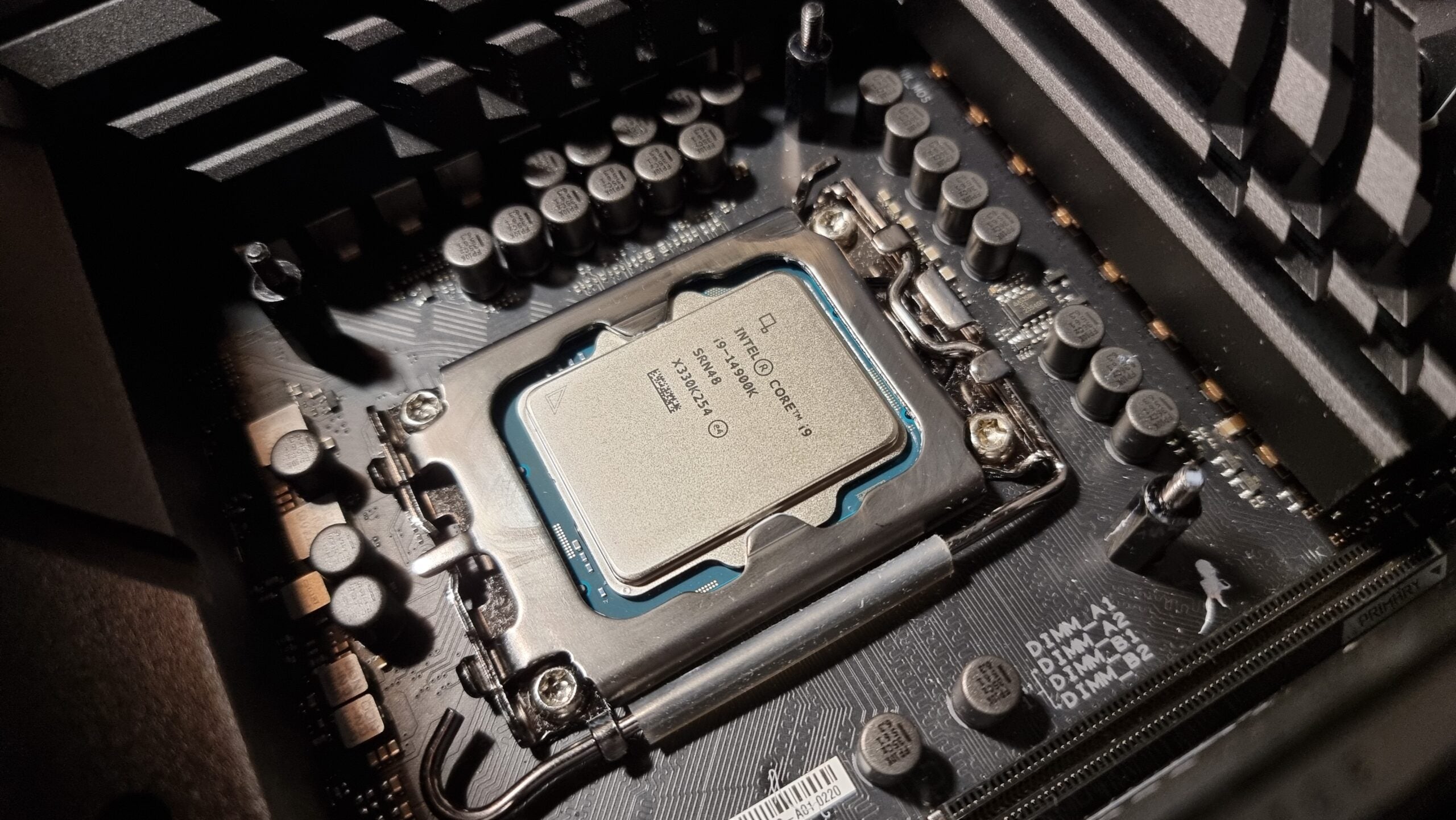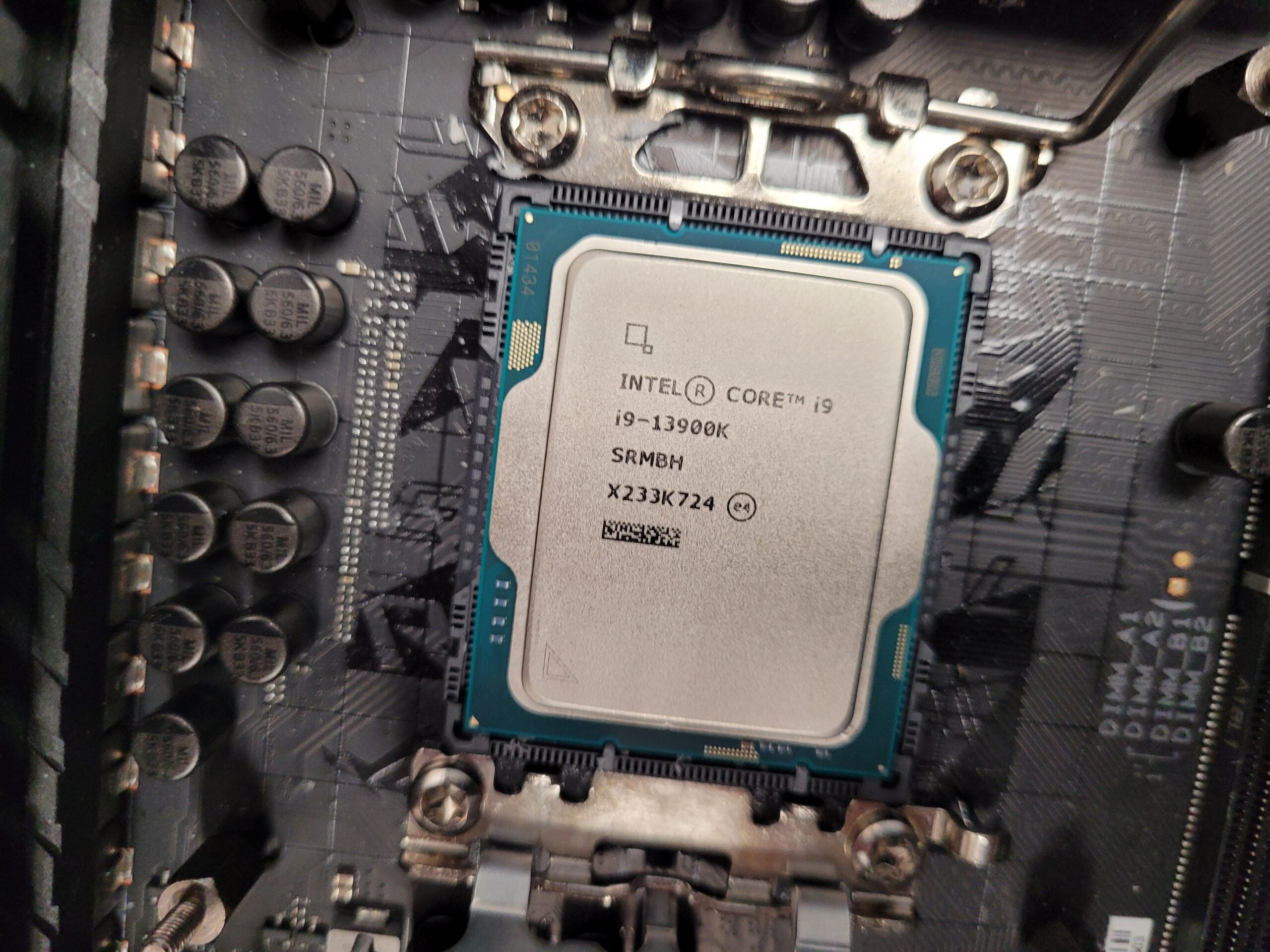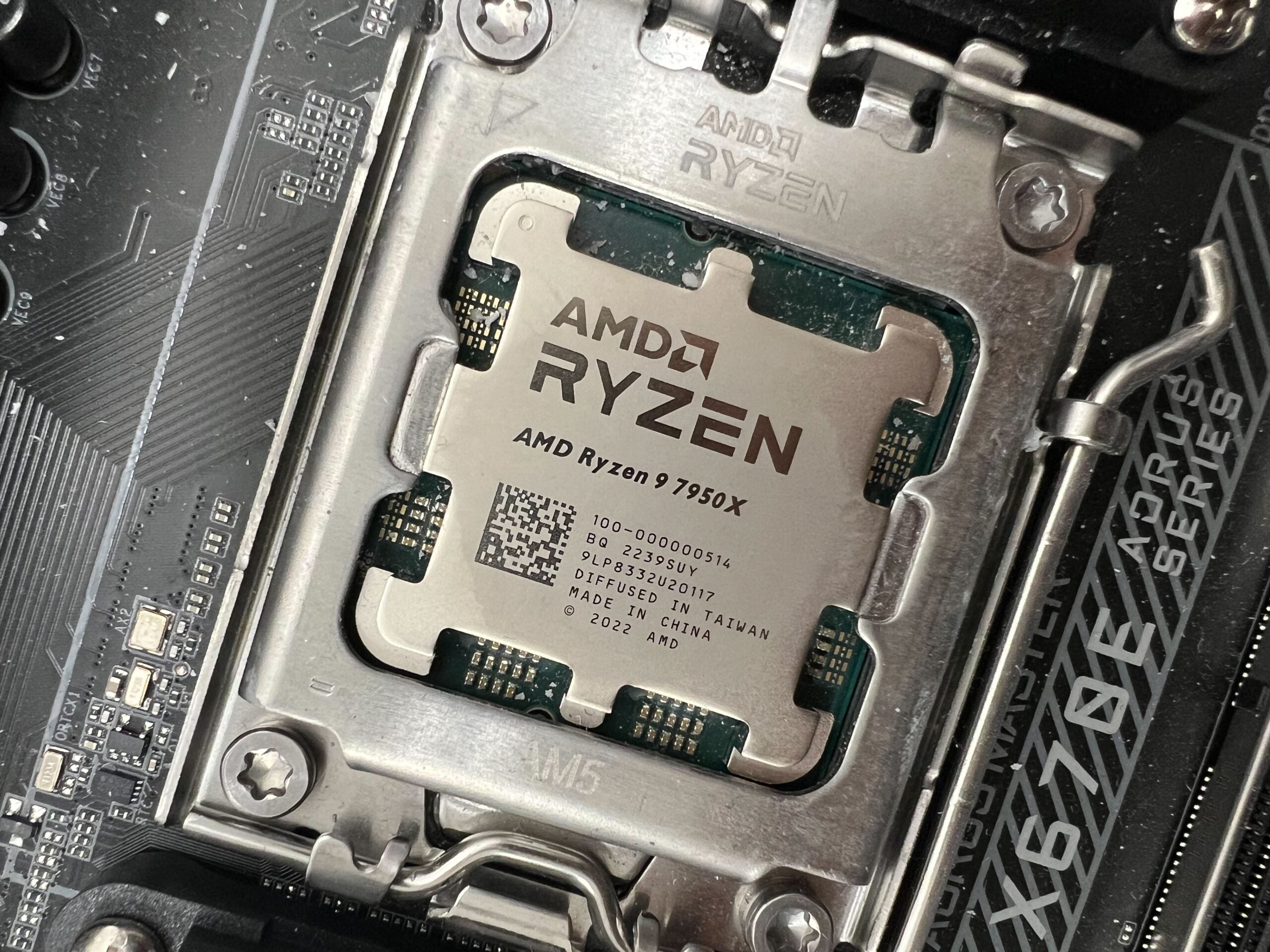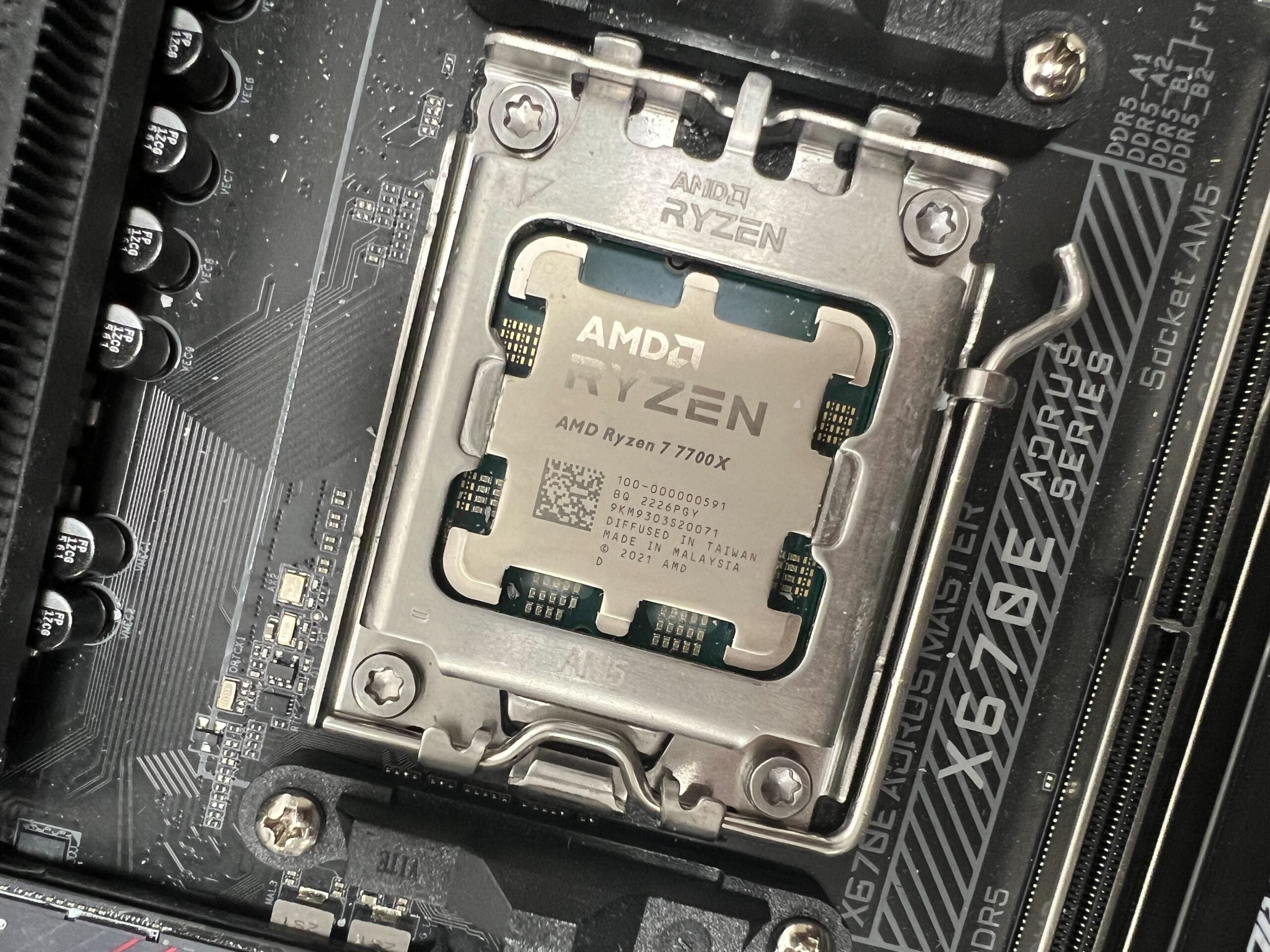AMD Ryzen 9 7900X Review
A supremely powerful desktop processor


Verdict
The AMD Ryzen 9 7900X is supremely powerful desktop processor
Pros
- Fantastic multi-core performance
- Top class gaming speeds
- Future-proofed with PCIe 5.0 and DDR5
- Great power efficiency
Cons
- Requires a powerful cooling system
- Can find better value gaming CPUs elsewhere
- Worth waiting for Intel Raptor Lake before buying
Availability
- UKRRP: £579.99
- USARRP: $549
- EuropeRRP: €669.00
- AustraliaRRP: AU$590
Key Features
- Zen 4 architectureThe AMD Ryzen 9 7900X features the new Zen 4 architecture, offering a significant performance boost on predecessors.
- 12 cores and 24 threadsWith so many cores, the AMD Ryzen 9 7900X provides a great multi-core performance and so excels at content creation.
- Support for DDR5 and PCIe 5.0By supporting the latest technology, this chip raises the performance ceiling of your entire system.
Introduction
The AMD Ryzen 9 7900X is one of the most powerful consumer desktop processors that the company has launched yet, featuring the new Zen 4 architecture and seeing the max boost clock speed climb up to a whopping 5.6GHz.
It’s not quite the most powerful processor in the new Ryzen 7000 Series, second only to the new Ryzen 9 5950X. But with a seemingly sensible $549/£579.99 launch price, it’s a fantastic rival to the Intel Core i9-12900K chip, offering both a competitive single-core and multi-core performance.
Is that enough to usurp Intel as the leading option in our Best CPU and Best Gaming CPU rankings? Here are my thoughts having thoroughly benchmarked the chip in our test rig.
Specs
- Built upon new Zen 4 architecture
- Offers support for DDR5 and PCIe 5.0
- Max boost clock speed of 5.6GHz
The AMD Ryzen 9 7900X is built upon the new Zen 4 architecture, using TSMC’s 5nm process node. This has allowed AMD to cram in a whopping 6.57 billion transistors, which is a significant increase on the 4.15 billion transistors in Zen 3.
Zen 4 also supports new features to ensure AMD’s latest processors are futureproofed for the foreseeable future. Support for DDR5 RAM enables you to benefit from the latest memory standard, while the upgrade to PCIe 5.0 ensures compatibility with the fastest SSDs on the market.
You will of course need to purchase these new components, as well as a motherboard with the new AM5 socket, which is going to require a lot of money. But the investment should result in a significant performance upgrade.
But how fast is the AMD Ryzen 9 7900X? AMD claims it has a max boost clock speed of 5.6GHz – that’s incredibly impressive considering AMD has previously struggled to achieve speeds beyond 5GHz. That result has also leapfrogged the Intel Core i9-12900K, which has a max turbo frequency of 5.2GHz.
AMD’s time at the top may be short lived in terms of max frequency speeds, with Intel recently teasing that its upcoming Raptor Lake (13th Gen) range could see speeds up to 6GHz. But AMD still deserves massive plaudits for closing the gap with Intel.
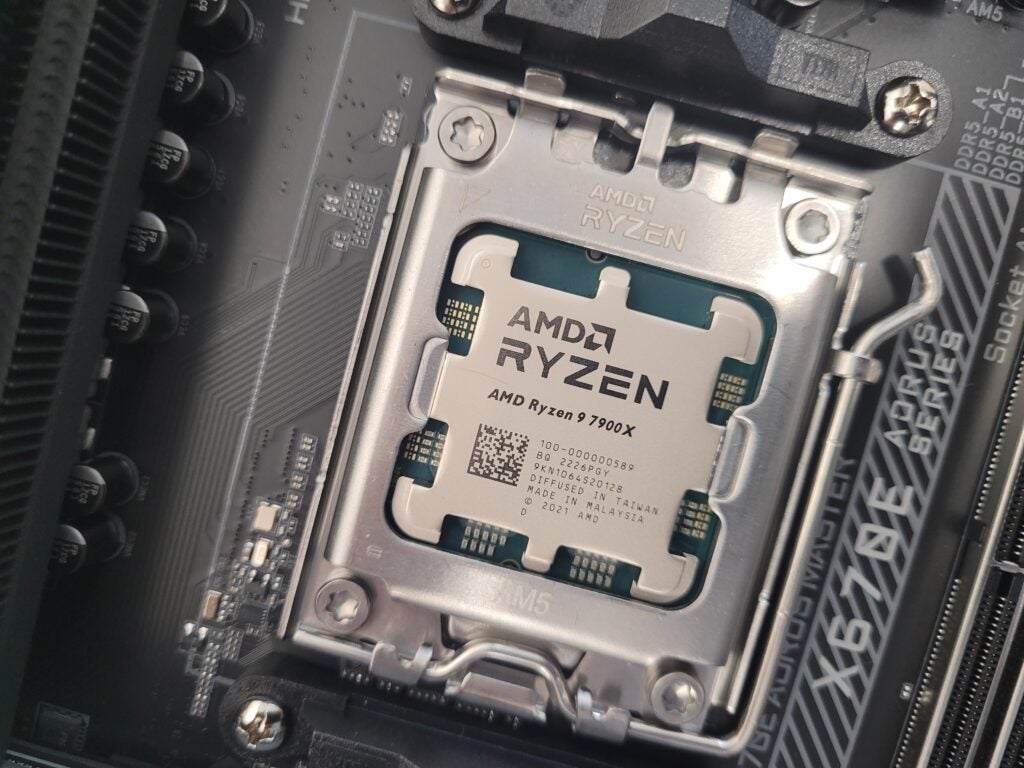
One potential cause for concern is that AMD has decided against upping the core and thread count, sticking to the same 12-core and 24-thread setup as the preceding Ryzen 9 5900X.
You’ll still see an improved generational multi-core performance thanks to the enhancements made to the architecture, but it’s nevertheless a little disappointing considering the Intel Core i9-12900K chip flaunts 16 cores and 24 threads, albeit with a hybrid design.
The AMD Ryzen 9 5900X also packs in integrated graphics with RDNA 2 architecture. However, it’s not powerful enough to play any modern game at a reasonable frame rate, so is only really handy for temporarily keeping your system operational when a graphics card is unavailable.
Test setup
There’s no sense in relying solely on AMD’s own performance claims, so I’ve put the AMD Ryzen 9 7900X through a series of benchmark tests to evaluate the performance. But in order to ensure a fair test with other processors, I’ve had to make sure I use consistent components where possible.
You can see the build I’ve used below:
- AMD Motherboard: Gigabyte X670E Aorus Master
- Intel Motherboard: ROG Strix Z690-E Gaming WiFi (12th Gen)
- RAM: Gskill Trident Z5 Neo DDR5-6000 CL30 2x16GB
- GPU: Nvidia GeForce RTX 3060 Ti
- Cooler: Corsair Hydro Series H150i PRO RGB 360mm liquid cooler
- OS: Windows 11
I’ve used industry-standard benchmark software, including Geekbench 5, PCMark 10 and Cinebench R23, to evaluate performance. And since many gamers will be interested in this processor, I’ve also included in-game benchmarks from some of the biggest games in recent years. But that’s enough talk, let’s get to the benchmark results.
Performance
- Outstanding multi-core performance
- Best gaming speeds test yet
- Ryzen 5 7600X offers similar gaming results
Intel previously claimed that the Intel Core i9-12900K was the “world’s best gaming processor”. That may have been true at the time, but certainly not now.
AMD has retaken the lead for gaming performance, with its Ryzen 7000 Series posting unrivalled scores. The AMD Ryzen 9 7900X is the most powerful desktop processor I’ve ever tested, no matter how you slice it.
Its impressive clock speeds result in one of the best gaming performances I’ve seen from a CPU. In Horizon Zero Dawn at 1080p, the Ryzen chip saw a 7fps performance advantage over the Intel Core i9-12900K, and a whopping 30fps increase in Dirt Rally.
The synthetic benchmarks back up this performance advantage, with superior results over the Intel chip across the board. Even the multi-core performance is better, despite having 4 fewer cores than the Intel Core i9.
But don’t take my word for it. Here’s a more detailed look at all of the benchmark results:
PCMark 10 Extended
| AMD Ryzen 9 7900X | AMD Ryzen 5 7600X | Intel Core i9-12900K | Intel Core i5-12600K | AMD Ryzen 7 5800X | |
| PCMark 10 Extended | 10,865 | 10,537 | 10,602 | 9991 | 9986 |
PCMark 10 Extended is a holistic benchmark that evaluates the performance of your entire system rather than one specific category. It’s a very useful tool for getting a snapshot look at performance.
The AMD Ryzen 9 7900X achieved a score of 10,865 which was the highest in the group test. The Intel Core i9-12900K came in at second, but noticeably lagged behind. Early signs indicate that the Ryzen 9 7900X is the most powerful processor I’ve tested.
Geekbench 5
| AMD Ryzen 9 7900X | AMD Ryzen 5 7600X | Intel Core i9-12900K | Intel Core i5-12600K | AMD Ryzen 7 5800X | |
| Geekbench 5 Single | 2180 | 2054 | 1937 | 1820 | 1550 |
| Geekbench 5 Multi | 18,613 | 11,055 | 17,709 | 12,711 | 9319 |
Geekbench 5 is a benchmark test that concentrates more specifically on CPU performance, while also breaking down the scores for both single-core and multi-core performance. This is important, as they’re each useful for different workloads: single-core is generally important for gaming, while multi-core is vital for intensive content creation such as 4K video editing and animation.
Once again, the AMD Ryzen 9 7900X achieved the best results in both categories. This is significant, as AMD has historically struggled to compete with Intel when it comes to single-core speeds. These Geekbench 5 results show the Ryzen 9 to be a versatile performer.
Cinebench R23
| AMD Ryzen 9 7900X | AMD Ryzen 5 7600X | Intel Core i9-12900K | Intel Core i5-12600K | AMD Ryzen 7 5800X | |
| Cinebench R23 Single | 1999 | 1926 | 1998 | 1894 | 1557 |
| Cinebench R23 Multi | 27,528 | 15,119 | 27,014 | 17,402 | 15,009 |
Cinebench R23 is a similar benchmark to Geekbench, as it also breaks down CPU performance between single-core and multi-core speeds. However, Cinebench is more taxing, simulating intensive content-creation applications.
As a result, this is one of the best benchmark tests for creative workloads. The AMD Ryzen 9 7900X came out on top once again, indicating it’s the best processor option if you want to edit video or create animations.
The Intel Core i9-12900K wasn’t far behind, but its additional cores weren’t enough to gain an advantage. It’s another impressive win for AMD.
Horizon Zero Dawn
| AMD Ryzen 9 7900X | AMD Ryzen 5 7600X | Intel Core i9-12900K | Intel Core i5-12600K | |
| Horizon Zero Dawn 4K | 48fps | 47fps | 46fps | 45fps |
| Horizon Zero Dawn Quad HD | 77fps | 78fps | 73fps | 74fps |
| Horizon Zero Dawn FHD | 94fps | 91fps | 87fps | 85fps |
We’re onto the gaming benchmarks now, to see what kind of impact the CPU can have on a game’s framerate performance. It’s important to note that an upgraded GPU will generally see a far greater performance uplift than a new CPU, so don’t expect huge gains here.
The Intel Core i9-12900K was previously heralded as the ‘world’s best gaming processor’ but the Ryzen 9 chip actually posted superior results at every resolution. AMD saw a 7fps advantage in Full HD, and a 4fps lead in Quad HD. There was only a 1fps difference in 4K, but the AMD still boasts a marginally faster performance.
Surprisingly, it was actually the new AMD Ryzen 5 7600X processor that came close to beating the Ryzen 9. The gaming performance was almost identical, despite the former being $150 cheaper.
Dirt Rally
| AMD Ryzen 9 7900X | AMD Ryzen 5 7600X | Intel Core i9-12900K | Intel Core i5-12600K | |
| Dirt Rally 4K | 65fps | 65fps | 63fps | 63fps |
| Dirt Rally QHD | 106fps | 107fps | 101fps | 100fps |
| Dirt Rally FHD | 158fps | 138fps | 128fps | 134fps |
Dirt Rally launched all the way back in 2015, and so isn’t a taxing game. This makes it a great benchmarking option to see how far the CPU can boost performance for older games.
The AMD Ryzen 9 7900X saw virtually identical results in 4K and Quad HD when compared to the AMD Ryzen 5 7600X, and only marginal gains over the Intel Core i9-12900K.
The biggest difference came when switching the resolution down to Full HD. The Ryzen 9 took a significant 20fps lead over the Ryen 5, and a whopping 30fps advantage over the Intel Core i9. So if you’re into eSports and want to hike up the frame rate as much as possible, it looks like the AMD Ryzen 9 7900X is an outstanding option.
Borderlands 3
| AMD Ryzen 9 7900X | AMD Ryzen 5 7600X | Intel Core i9-12900K | Intel Core i5-12600K | |
| Borderlands 3 4K | 30fps | 36fps | 34fps | 34fps |
| Borderlands 3 QHD | 60fps | 62fps | 64fps | 64fps |
| Borderlands 3 FHD | 81fps | 83fps | 88fps | 90fps |
Borderlands 3 is an incredibly taxing shooter, and so it’s difficult to achieve a high frame rate without a high-end graphics card.
Borderlands 3 proved to be an outlier in my testing, as the Intel Core i9-12900K posted superior results at every resolution. I’m not sure why this occurred, but could be a sign that AMD needs to update the CPU drivers to optimise performance.
Either way, It’s a great example to show that you aren’t guaranteed a better gaming performance by buying faster components, as there are so many variables at play.
Total War: Warhammer 3
| AMD Ryzen 9 7900X | AMD Ryzen 5 7600X | Intel Core i9-12900K | Intel Core i5-12600K | |
| Warhammer 3 Battle (4K) | 31fps | 31fps | 31fps | 30fps |
| Warammer 3 Campaign (4K) | 19fps | 12fps | 14fps | 10fps |
Total War: Warhammer 3 is the newest game on this list, and also the most demanding. Even with an RTX 3060 Ti GPU in my test rig, every processor struggled to run this game at a high frame rate in 4K. Warhammer 3 offers benchmark tests for both battles and on the campaign map, with the latter seemingly being the most taxing to render.
The AMD Ryzen 9 7900X saw the best results in the group test for both scenarios. There was nothing separating the Ryzen from the i9 Intel chip for the battle benchmark, but flaunted a 5fps advantage when benchmarking the campaign map.
| AMD Ryzen 9 7900X | AMD Ryzen 5 7600X | Intel Core i9-12900K | Intel Core i5-12600K | |
| Civ VI turn time (in seconds) | 6.96 s | 7 s | 7.27 | 7.35 |
The Civilization VI in-game benchmark differs from the rest, as it doesn’t measure frame rate performance, but how long it takes for the AI to make its calculations. A lower number indicates faster loading times.
The AMD Ryzen 9 7900X was the quickest processor in the group test, although it only beat the Intel i9 chip by half a second. Impressively, the Ryzen 5 7600X was only 0.04 seconds behind, again emphasising that it’s an incredibly competitive gaming chip despite its more affordable price.
Power consumption and heat
- Impressive power efficiency
- Runs hot, so needs a high-end cooling system
| AMD Ryzen 9 7900X | AMD Ryzen 5 7600X | Intel Core i9-12900K | Intel Core i5-12600K | |
| Idle Power Draw | 78 W | 73.5 W | 73.1 W | 51.5 W |
| Peak power draw | 216 W | 168.5 W | 330.7 W | 195.8 W |
With energy bills spiralling up high, it’s never been more important to consider how much power your PC is consuming, both when idle and under stress.
Given the performance the AMD Ryzen 9 7900X processor is capable of, it’s not a big surprise to see it consumed the most power in the group test when running idle. With no software running other than Windows 11, I recorded a system power consumption of 78W. For comparison, the Intel Core i9-12900K consumed 5W less.
But it was a different story when putting the processors under stress. When running the Cinebench R23 (multi-core) benchmark the Ryzen 9 7900X build peaked with a 216W power consumption. That’s not exactly a low figure, but it was significantly better than what the Intel CPU achieved, which recorded a whopping 330.7W peak.
| AMD Ryzen 9 7900X | AMD Ryzen 5 7600X | Intel Core i9-12900K | Intel Core i5-12600K | |
| Idle CPU temperature | 40 °C | 39 °C | 23 °C | 24 °C |
| Peak CPU temperature | 95.5 °C | 88.88 °C | 91.97 °C | 68 °C |
It’s also important to consider the temperature of a CPU, as it will determine how much you need to spend on a cooling system, and how much headroom you’ll have for overclocking.
When idle, the AMD Ryzen 9 7900X recorded the highest CPU temperature in the group test, with a result of 45°C.
I used the PCMark 10 Extended benchmark to record the peak CPU temperature. The AMD Ryzen 9 7900X was once again the hottest chip on test, although the Intel Core i9-12900K wasn’t far behind. This means you really need a high-end cooler to maximise performance.
Latest deals
Should you buy it?
You want an all-round powerful processor:
The AMD Ryzen 9 7900X came out on top for the vast majority of my benchmark tests, whether it was for single-core or multi-core performance. If you engage in a lot of different workloads, and so need a versatile chip, there aren’t many better than this Ryzen.
You only need a high-end CPU for gaming:
Only need a processor for boosting gaming performance? Then the AMD Ryzen 9 7900X does not represent good value. The Ryzen 5 7600X saw virtually identical scores in our gaming benchmark tests, and is available for $250/£260 less.
Final Thoughts
The AMD Ryzen 9 7900X is a supremely powerful desktop processor, offering both a better single-core and multi-core performance than the Intel Core i9-12900K despite being available at a more affordable price. Support for DDR5 RAM and PCIe 5.0 SSDs also raise the performance ceiling for your entire system.
The Ryzen 9 7900X is overkill if you just want a chip just for gaming, with both the Ryzen 5 7600X and Intel Core i5-12600K providing better value. But if you need a jack-of-all-trades processor, the AMD Ryzen 9 7900X is a stellar option.
But do keep in mind that Intel is planning to launch its Raptor Lake desktop processor range shortly, so it may be worth holding back on a CPU purchase until then.
How we test
We always review multiple CPUs at once to compare date, using consistent components for fair testing where possible.
We use a mix of both synthetic and in-game benchmarks to gauge performance, while also considering additional features and pricing.
Use the same components where possible for fair testing.
Use both synthetic and in-game benchmarks for testing
Test both CPU temperature and power consumption.
FAQs
The Ryzen 9 7900X is priced at $549/£579.99, making it more affordable than the Intel Core i9-12900K.
No, the AMD Ryzen 7000 processor series only support motherboards with a DDR5 slot, which don’t support DDR4 RAM.
Trusted Reviews test data
Full specs
Sustainability
Trusted Reviews holds the fact that global warming is not a myth as a core value and will continuously endeavor to help protect our planet from harm in its business practices.
As part of this mission, whenever we review a product we send the company a series of questions to help us gauge and make transparent the impact the device has on the environment.
We currently haven’t received answers to the questions on this product, but will update this page the moment we do. You can see a detailed breakdown of the questions we ask and why in our sustainability info page.

